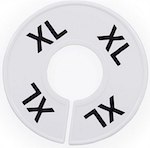Imagine that you’re a tech company executive setting up an innovation program. Most of your initial focus is on generating and validating individual product concepts: probably via a LeanUX or Lean Startup model with rapid paper prototypes, MVPs, and quick vetting of hundreds of random employee submissions. Unlike at a startup, though, you have a major hurdle after your validation team comes up with a viable concept: how to find a home for it within a mainstream product group.
Which prompts the question: who is your internal customer for a validated product idea?
For me, the answer is heavily dependent on the size of the idea and its alignment with your existing roadmap/technical investment plan.
Let’s tighten up our scenario a bit:
a) You’re the general manager (GM) of one product division, overseeing several product lines including engineering and product management teams. Your CEO mentions innovation at every monthly meeting.
b) There’s absolutely no excess capacity or “white space” in your development plan. No slack, no talent sitting on the sidelines, no big chunks of unallocated budget. Like every product organization, you’re already overcommitted.
c) Nevertheless, you managed to form a lean validation team with one senior product manager, one seasoned UX/UI designer, and one technical architect. They have an outside coach and 90 days to cycle through customer needs assessments and a huge backlog of “good” ideas. They are in search of something worthy of your investment. Everyone has read up on build-measure-learn.
Getting this far has been already an organizational challenge. The CEO wants to know when these investigations will deliver solid revenue (which we can’t know yet) and your general manager peers are resistant to change (or jealous). Finance wants an FY2016 ROI on innovation spending. And everyone is circulating PR-polished profiles of heroic Lean CEOs.
So now’s a good time to think through your next steps, assuming that the validation team will come back with a truly innovative/important concept. Where will this concept live? Who is the internal customer that you’ll have to “sell” on it?
Let’s work up from small concept to large.

1. Features, Workflows, Bug Fixes (S)
These ideas fit within a single product. Without much impact on the rest of the company, your team could improve an online sign-up experience, add a high-value integration to third party data, or fix the reporting error that is crushing Tech Support with trouble tickets. Your immediate customer for this small improvement is the product manager assigned to the relevant product.
Remember (b) above. Your product manager has a carefully crafted backlog and roadmap for the next several quarters, and has already made some very difficult decisions about what’s not in plan. The development team has no excess capacity, or your product manager would already have grabbed it. And everyone has more detailed knowledge of this product/market segment than you do.
- Bad approach: calling your product manager in for a motivational whipping. “I’m your General Manager, we’ve put some smart folks against this innovation thing, and they’ve identified Feature G as critical. Get it started today, and don’t whine about commitments or slipped releases. I know that you and Engineering always hide some resources for this kind of surprise. And why the %$#@ didn’t you have this in the plan already?”
- Good approach: a constructive, respectful discussion with your product manager and engineering lead. “Our innovation squad identified this as a major win. You’ve probably seen this proposal before, but it’s not in plan for the current quarter. Get with them, review their learning, and rough-size the work. By end of week, I need your joint recommendation for whether we should push this to the top of the backlog and what to delay instead. I want to hear about both positive and negative impacts.”
You have the positional authority to “just get this one done.” But longer term, that over-glamorizes your innovators and undercuts the judgment of existing product teams. It’s very possible that something much more important has higher priority; that technical or legal restrictions make this improvement impossible; or that another organization is handling the fix. Likewise, your handpicked innovation team may just have gotten it wrong. Leadership is about getting to good answers rapidly, with strong collaboration across groups, and demonstrating that innovation processes can lead to better outcomes. Forcing your product teams to accept executive decisions about incremental innovation will ultimately be frustrating, dis-empowering and anti-innovation.
2. New Product in Your Organization (M)

Same drill, one level up. Your business unit already has a handful of existing products, each with a development team and product manager and revenue goal and marketing/sales plan. And importantly, there’s no fully staffed engineering platoon waiting idly for some new assignment.
Your customers for a new product are your own product, engineering and marketing direct reports.
Creating this new product within your business unit necessarily means pulling people and funding from existing products. Good agile organizations like yours emphasize long-lived, whole teams – dev plus test plus product plus UI plus docs – so shifting people may mean re-assigning entire scrum teams. And at last quarter’s product planning meetings, your senior folks arrived at a rational plan, which you might now overturn.
- Bad approach: director-level abuse and rank-pulling. “My hand-picked Lean trio figured out what you lazy thinkers and your staff missed. We’re going all out on Product P starting tomorrow. George and Sanjay: both your products are below forecast, so you will each be giving up one development team to Product P. Immediately. Sarah: you’re assigning a senior product and junior product owner from your PM group. I want names to me by 5PM today. The three-person innovation squad will step in as lead architect lead, product director and head of UX/UI – so all transfers will report to them.”
- Better: collaborative search for a thoughtful plan. “I’m really excited about the innovative proposal for Product P. The three-person innovation team has only had six weeks to research it, though. George and Sarah: this new product is closest to your existing offerings. Who are the two best people from each of your groups to help us review findings, size the work, build out more of a business case, and suggest the right staffing model? Figure we’ll need them one-third-time for the next 4-6 weeks. Engineering should stick to the current plan for now, while we size this and estimate the impact elsewhere. Let’s get innovation out of the Idea Lab and into rapid development.”
Again, you could choose to steamroll your own staff, and make this happen at all costs. Instead, you could use this as a model for building trust and making innovation relevant across your entire business unit. Everyone gets to feel more innovative.
1a, 2a: Features and Products for Other Business Units
There’s no guarantee that innovative, validated concepts from your validation squad belong within your own business unit. When they naturally belong elsewhere, you’re now the executive champion and chief innovation salesperson. But without command-and-control authority.
Your customers are those cross-organization product managers, engineering directors and business unit executives who should be excited about these innovations. They are outside your direct control, so collaboration and social influence are your obvious approaches. As always, getting to the right solution is more important then taking credit. And innovation should be contagious.

3. New Business Model (XL)
Here’s where big innovations run headlong into core product assumptions: cloud offerings versus existing on-premise software; channel-only distribution upsetting direct enterprise sales; or consumer-style single apps depositioning high-priced bundles. If your innovation includes business model changes, then it will be smothered within an existing business unit. Who can afford to risk this year’s revenue on a wild-eyed experiment based on some weird concierge test? Expect your executive-level peers to belittle your evidence and question your (wo)manhood.
Your customers for a business-altering innovation, then, are the CEO and your executive peers. You’re most likely asking the CEO to consider an entirely new business unit, built around different kinds of value creation or distribution or audience. A 3-to-5-year bet on innovation that the Board will review. And expropriation of good people from existing business units. (Even if the Board approves more money, many attractive hires will be internal.)
Whether you expect to lead this new division or not, you’ll have to visibly and aggressively promote this new product concept. Champion the team, gently deflect the naysayers, and keep the agenda moving forward. Your long-term investment in peer collaboration and even-handedness pay off here help here. But plan on a long campaign.
Sound Byte
Validated product concepts are a great starting point for corporate innovation. Larger organizations will also need leadership, internal salesmanship, trust and executive-level organizational planning to let innovation flourish.

